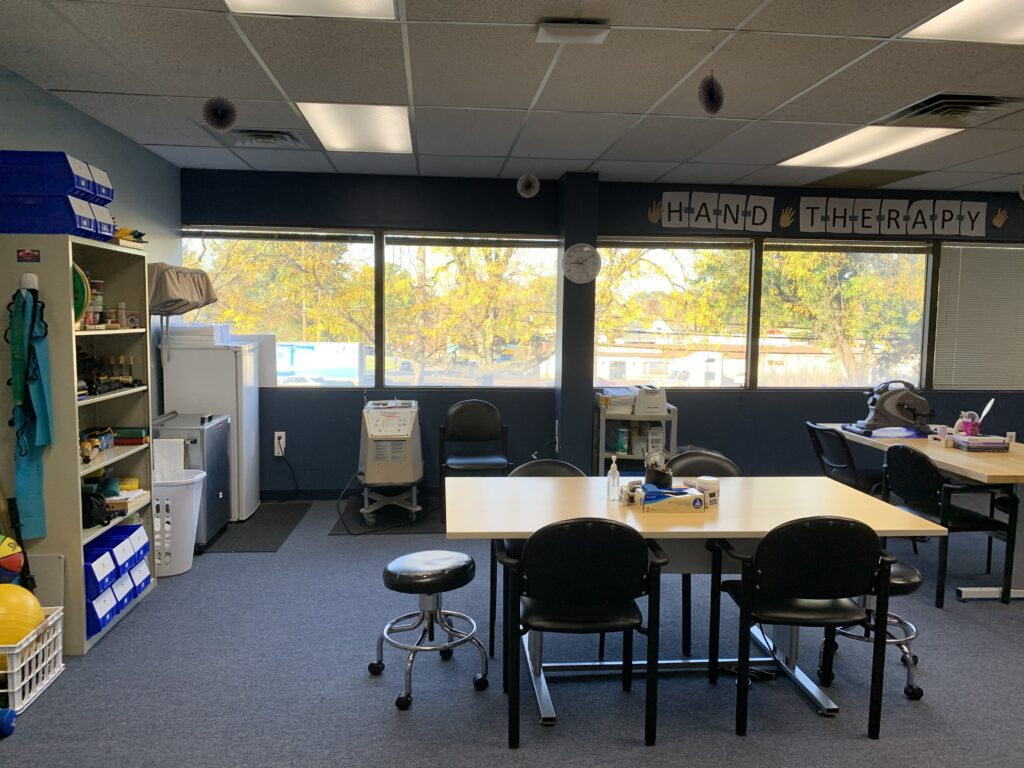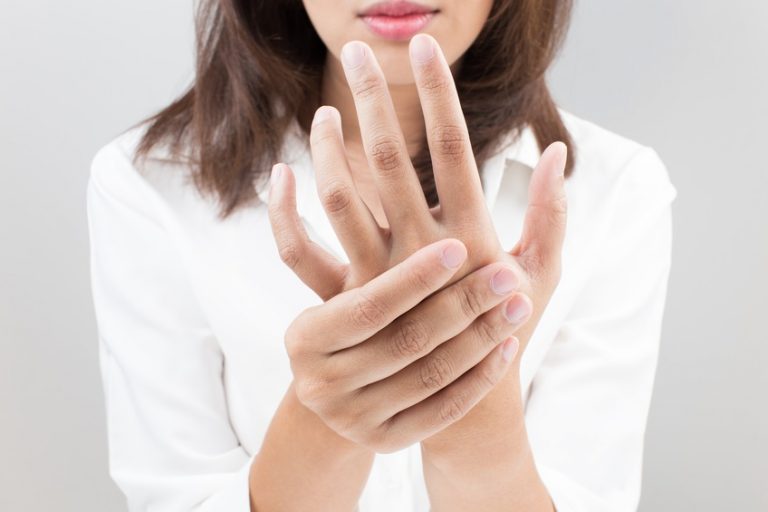Hand Therapy
Hand & Occupational Therapy in NJ, NY & FL
At SportsCare Institute, our hand and occupational therapy specialists are specifically trained to give you the best care available. We use innovative techniques to help you recover and get back to your routine.
What Is Occupational Therapy?
Occupational Therapy is a form of therapy that encourages rehabilitation through everyday activities. Upper extremity pain can make daily tasks impossible, but with our trained team of professionals, we will help you regain motor functions so you can work on everyday tasks with independence. We treat both joint and bone conditions.
Joint Conditions
One in 5 people over age 18 have doctor-diagnosed arthritis. At SportsCare, we can lessen the chance of aggravation by training you in body movements that will reduce stress and strain on your joints. Our specialists can give you splints for your hands or wrists as extra support for daily activities like driving, bathing, dressing, or other tasks.
Bone Conditions
For bone fractures or dislocations, our staff will implement management and movement therapies. The focus will be on three areas: controlling swelling, minimizing stiffness, and helping with exercises that promote healing of the bones.
As physical therapists, our goal is to alleviate pain and maximize function in order to help our patients return to their activity level prior to their injury, pain or discomfort with Physical Therapy. Specializing in pre and post-operative care, we also treat a range of diagnosis which include, but are not limited to:
This dysfunction is most often caused by injury, a broken arm, or extended pressure to the area. Damage to the radial nerve, which provides movement and sensation to the wrist, can make it difficult to straighten the arm at the elbow and create abnormal sensations in the hand or forearm. Our staff would help to maintain muscle strength and braces, splints, or other devices may be prescribed to help with the use of the injured area.
There are more than 100 types of arthritis, a form of joint pain or disease most commonly found in women and aging adults. Individuals may suffer from swelling, pain, stiffness, and decreased range of motion. Therapy would include pain management and joint protection as well as adapting daily activities or providing tools to make tasks easier.
This mass or lump appears most commonly on the back of the wrist and can vary in size. Usually, they occur in younger adults between the ages of 15 and 40 years old. In addition to pain management, our staff will help to increase range of motion and provide exercises to increase the function of the wrist.
Women are three times more likely than men to develop this condition that occurs when the median nerve becomes pressed or squeezed at the wrist. Ordinarily, individuals will feel pain, numbness, or weakness radiating in the arm. Occupational therapy would include educating the patient on preventative care options, symptom management, and other ways to avoid surgery.
This occurs when the joint forces the end of the bone out of position. Often, dislocations are caused by a fall or blow to the area. Our staff will provide exercises to promote the healing of the impacted area.
A broken bone, or fracture, can be completely or partially fractured. This condition is most often caused by Osteoporosis, trauma, or the overuse or stress of tired muscles. Through occupational therapy for pain and swelling management and splints, patients can return to their daily activities with an increased range of motion and strength.
This condition is due to the inflammation of tendons, and it is widely found in the shoulder, elbows, wrist, knee, and heel. Repetitive motion can cause tendinitis. Therapy would include the strengthening and lengthening of the affected muscle.
This kind of injury typically occurs near joints like the shoulder, elbow, knee, and ankle. They may seem to appear suddenly but are actually due to small tears in the tendon that happened over time. Occupational therapy may consist of applying techniques to reduce swelling and evaluating the patient’s environment at home to identify potential obstacles.
This disorder is due to the excessive wear and tear on tendons and muscles. Improper work positioning, repetition, or force are factors that cause this condition. We might use splints to help reduce the stress on the area, as well as rest and exercise techniques to relieve tension and allow for the increased flow of oxygen to the area.
A surgical removal of all or part of a limb such as an arm, leg, foot, toe, or hand requires specialized occupational therapy. Our staff can help with learning new ways to do everyday tasks and assist with adapting the home and office to lessen obstacles.
Usually caused by using tools with handles that require a repetitive and forceful gripping action, trigger finger is a type of tendonitis. This condition creates a nodule on the tendon, making the finger click or lock in a position. Anti-inflammatory medicine is usually used along with occupational therapy to alleviate stress in the area. Our therapist will also do an analysis of the workplace to create adaptive techniques to lessen the aggravation of the affected area.
This hand deformity is developed over time and occurs when knots of tissue form under the skin, creating a thick cord that pulls the fingers into a bent position. During the early stages of the contracture, our staff may use stretching and exercises along with heat and ultrasonographic waves. A custom splint or brace may also be recommended to stretch out the fingers.
Expectations of SportsCare
At SportsCare, we give expert care to your current pain and dysfunction while also addressing the root of the problem. Our team will review your medical and injury history and discuss how it affects your daily life, and your ability to work, perform hobbies, sports, or other activities. Then, we will go through a thorough examination, testing your range of motion, flexibility, posture, joint mobility, strength, balance, gait, and other tests pertinent to your injury. Our certified professionals will re-evaluate and monitor your progress to ensure we are taking the proper steps for a safe and quick recovery. Your occupational therapist will also discuss with you the expected treatment time and educate you on what you can do outside of occupational therapy to help boost your recovery during and after your time with us.
At SportsCare, our commitment is to give the highest quality occupational therapy in an inviting atmosphere. This care allows our patients to perform at the same level or better than before their injury. Contact us for your appointment today!
At SportsCare we understand that your pain may need urgent care. It is our policy to schedule an appointment within 24 to 48 hours. Easily request an appointment below, or call the facility nearest to you to speak with someone from our team!
Customized Treatment Plans
Physical Therapy is an important and necessary way for people to recover. The key to success for every therapy program is individualization, and at SportsCare Physical Therapy we see each of our patients as individuals. With a customized treatment plan that is unique to each patient, our therapists are able to address all of their patients’ specific needs!
At SportsCare we verify your insurance immediately, at no cost to you, so you’re fully aware of your responsibilities way before your first visit. It’s just one more step that we take to ensure that you have the best care possible.






